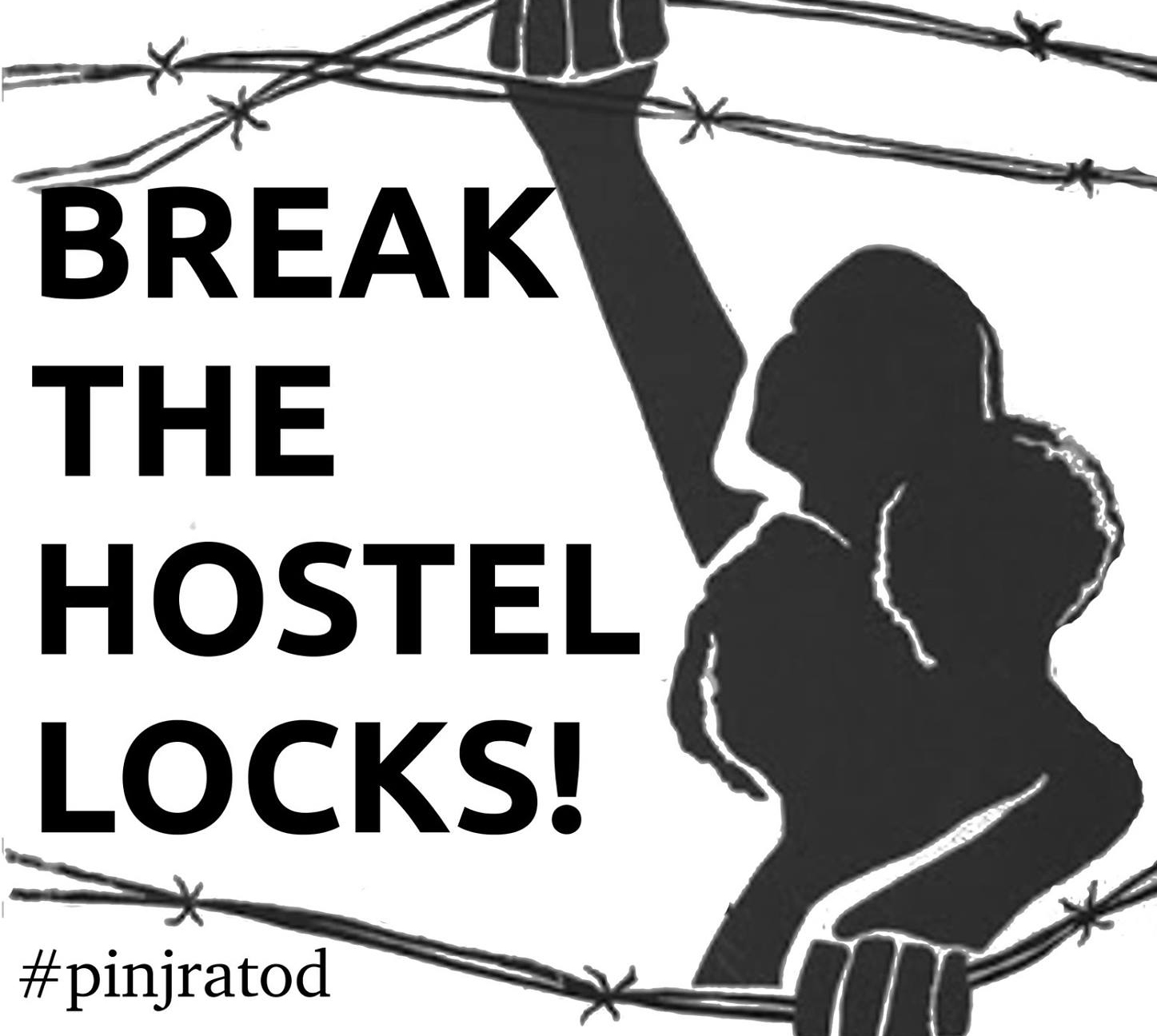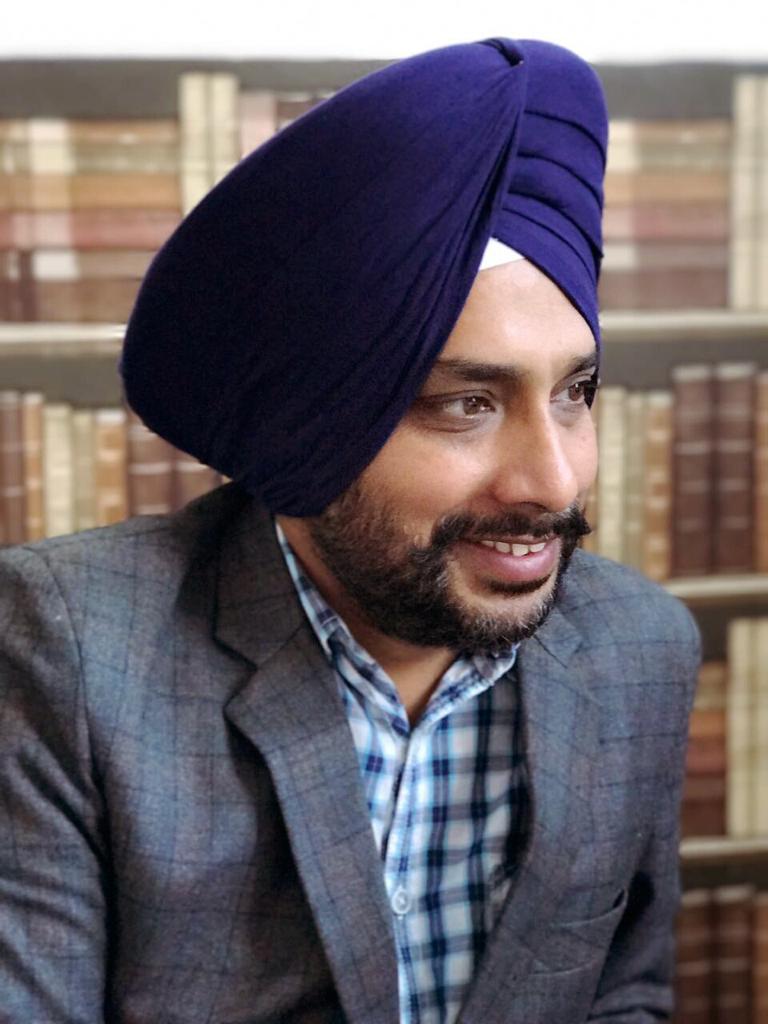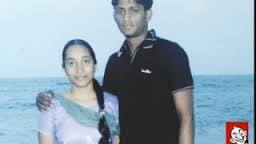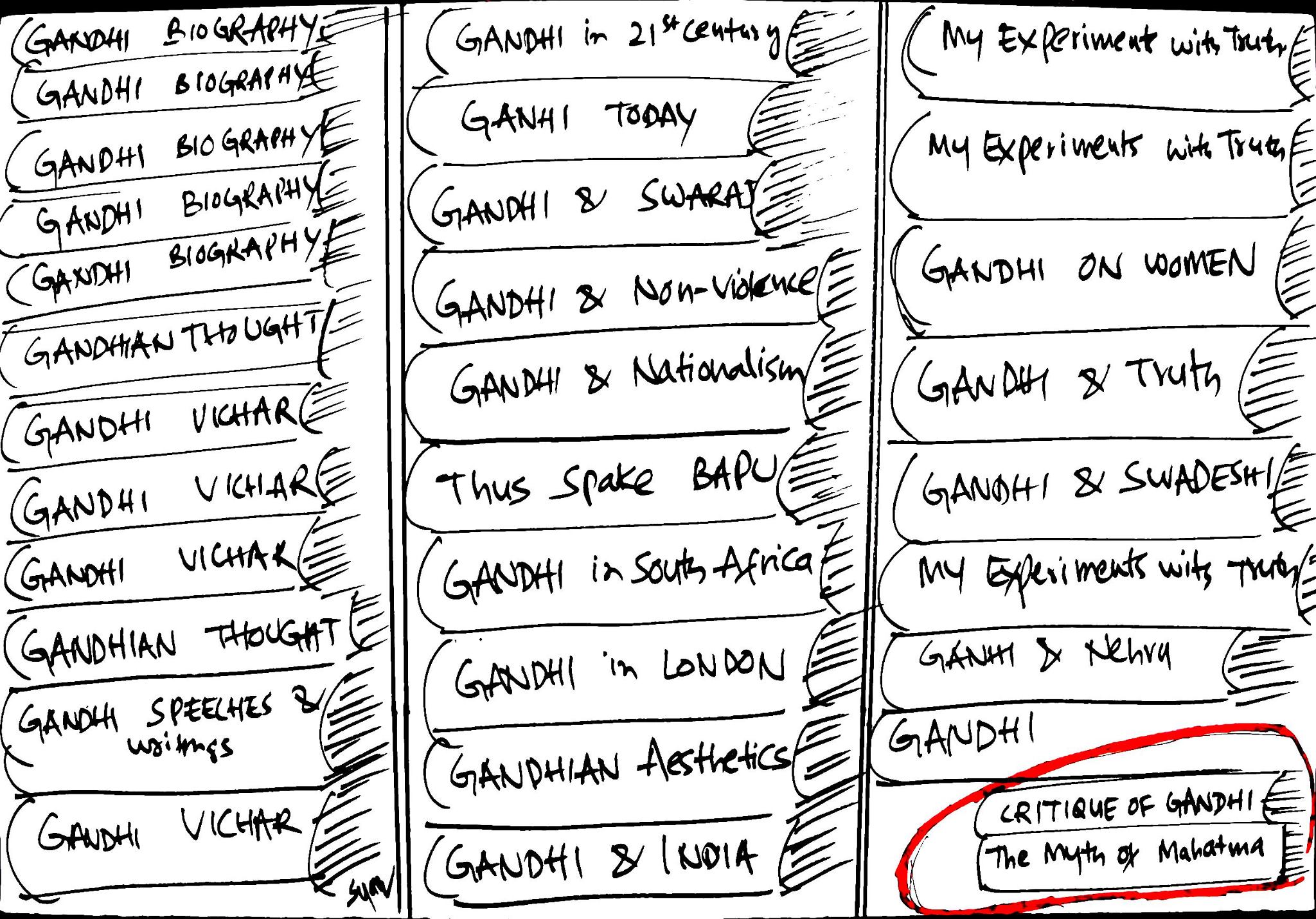Via Shradha T K Lama and Sabah Maharaj
Statement: Why we decided to leave Pinjra Tod
“I have come to believe over and over again that what is most important to me must be spoken, made verbal and shared, even at the risk of having it bruised or misunderstood.” – Audre Lorde
 We are writing this statement to express our disagreements with the women’s collective Pinjra Tod and to explain clearly as to why we made a conscious decision to leave the organization. The signatories of this statement have been active members of the organization and have been part of the internal workings of the group. We write this to put forth our experience as women from marginalized race, religion and caste and to state in clear words as to how the intersectional feminism of Pinjra Tod is only a showcase from the outside and internally how marginalized women have little or no say in the decision making.
We are writing this statement to express our disagreements with the women’s collective Pinjra Tod and to explain clearly as to why we made a conscious decision to leave the organization. The signatories of this statement have been active members of the organization and have been part of the internal workings of the group. We write this to put forth our experience as women from marginalized race, religion and caste and to state in clear words as to how the intersectional feminism of Pinjra Tod is only a showcase from the outside and internally how marginalized women have little or no say in the decision making.
We have been reluctant to write this in the public platform in fear of causing rift in the “women’s” movement in universities, in fear that one of the only active all women’s organizations being more vulnerable to attacks from patriarchal forces needs to be safeguarded. But over the months the way the movement has unfolded, the show of intersectional feminism only in the outside and in anxiety that future generations from our backgrounds need not go through what we did, we have collectively decided to write this. We have also come to believe through experience that priorities of Upper Caste feminists are different and a homogenous women’s movement is oppressive to women from marginalized race, religion and caste.
Pinjra Tod is currently active in few elite colleges of Delhi University and in Jamia Millia Islamia. It holds meetings in the respective colleges and holds central meetings of all colleges collectively to discuss matters pertaining to the larger collective.
In the central meetings which usually continued for hours, it was said to be a “feminist gathering” and “sisterhood meetings”. These central meetings were to be “inclusive” hence speaking in Hindi was encouraged and all were given chance to speak. But in our collective experience in a gathering of majority Upper caste women we have felt anxious, nervous to raise our concerns which were different from theirs and thus most of us have hardly spoken in any of these meetings.
The space that upper caste women occupied in the meetings, the hegemony of few who control the organization and the fact that in few cases that we did speak up our voices were hardly taken into account made these meetings far from inclusive. Similar was the case with the WhatsApp group and same was the case with the Pinjra Tod Facebook page where the majority, with the exception of one Muslim woman (who is a signatory of this statement), are upper caste Hindu women administering the page. Marginalized women were only called in when they needed to write a post on Delta, Jisha or Hadiya. The coordinators group, which comprised of few members from the larger collective also comprised of majority Upper caste women.
In the timeframe that we were active in the organization we have felt like mere tokenism gestures only needed to step up and be seen when Pinjra Tod needed to showcase that it did have Dalit, Muslim, Tribal women in its organization, while the decision making body remained and still remains closely monitored by few upper caste women who wield so much power within the organization and in the political circle in Delhi at large that even to speak up against or to express dissatisfaction came with a certain degree of reluctance. The Upper caste feminist rhetorics of “sisterhood”, “Pyaar aur politics” created an environment fraught with emotional manipulations.
PINJRA TOD IN LSR
Marginalized women within the organization have raised their issues time and again with messages, letters and all other possible means. Those of us who have decided to write this strongly believe that curfews need to be abolished and hostels operate like cages for women in universities; but we also believe that the problem has much more depth to it and cannot be reduced to a simple binary. A binary that opposing Pinjra Tod means opposing the abolition of curfews.
Criticisms first stemmed from the Lady Sri Ram Pinjra Tod unit in 2017 where all the Pinjra Tod members were SC/ST/OBC women. The difference between the LSR Pinjra Tod unit and the unit in other DU colleges were evident. We even questioned ourselves whether we would have joined the organization if we were in other colleges where most of the members were savarna women. Due to anxiety and mental stress we decided to have this discussion only with those few women who were active and had hold over the decision making. This decision from our side came from our experience in the central meetings.
We put forth our criticisms stating our problems with the central meetings, the decision making and how experiences of marginal women in hostels is different. We stated the uneasiness we felt with being part of a collective where majority of women were our oppressors. After all, within LSR it was Savarna women we resisted together and while attending the central meeting it was Savarna women again with whom we had to huddle in “sisterhood”. All criticisms were met with calls for meetings where hardly anything was done to come up with constructive solutions. In one particular case where they did reply in writing it was only pages and pages about what work Pinjra tod has done since their inception and how they have pushed for various demands. In height of the internal criticisms they decided to have reading sessions on caste and gender where PDFs of essential caste/gender texts were forwarded and each member was to take up one text, read and present during a meeting in an effort to create more “sensitization” among the members. Many of us backed out from the reading sessions unable to bear the emotional strain of having to present and explain texts and issues that were so close to our identity, that too to a group of upper caste women. At the end of this many of us left the organization.
In November 2018 a second round of protest was held in LSR but the central demand of the protest was once again the abolition of curfew and then came the issue of reservation. During the 2018 protest in LSR, a meeting was held in the hostel where one of the active members in the protest expressed the impracticability of implementing OBC reservations. In the aftermath of the protest, the hostel administration has stated the possibility of OBC reservation in hostel only by converting the single seater rooms into double seater rooms. Single seater rooms are assigned to students in third year on the basis of their CGPA and thus as one would expect most of the single seater rooms in LSR hostel are filled by upper caste students.
If Pinjra Tod was a movement led by women from oppressed communities or even a movement for social justice in its true sense, then wouldn’t this come first in their agenda? There’s no saying as to what demand is more important than the other but what is “abolition of curfew” and “Reclaiming of nights” when there are no SC/ST/OBC students in the first place? And the results are clear as thin ice, there was no consensus on the issue of OBC reservation among the protestors during the 2018 protest. And we know in full confidence that if the demand for OBC reservation had been the central issue of the 2018 protest or to do away with the admission procedure based on merit, then only a handful (that too doubtful) would have turned up for the “militant” protest held outside the LSR gates.
PINJRA TOD IN JAMIA
Given the distinct nature of Jamia, its vulnerable position as a Muslim minority institution, Pinjra Tod invariably worked differently in it. Muslim women from Jamia have always been used as tokens to be showcased in the face of any criticism coming in the way of the collective. Whereas, in the internal workings of the organization most of the decisions for Jamia currently are taken by Savarna women from outside Jamia with the aim of ‘politicizing’ and ‘organizing’ the women in Jamia by holding cultural events, which were attended by a small number of women. The new page ‘Jamia Women Fight’ on Facebook is also mainly operated by women from outside Jamia under the guise of being exclusively by the university students. This has just been another example of how Muslim women have been used by Savarna Hindus to fulfill their saviour complexes and revolutionary fantasies.
In an instance during a central meeting, a core committee member who identifies herself as an atheist stated how she felt at unease by any display of religion. This leads one to question what the stand of Pinjra Tod is on religion? While different people may have different experiences with regards to religion, for a lot of us from marginalized sections, religion has been an emancipatory force, a means of survival and a source of strength as well. And at the same time, Muslim people have always faced hostility in response to their religion and its practices from all sections of the society, along with the state, be it progressives or right-wing radicals.
In another incident, a Kashmiri woman student from Jamia left Pinjra Tod as she felt there was little room to disagree with the commonly held opinion within the group that religion was something that one needed to shrug off in order to attain “freedom”. In 2017 when Pinjra Tod extended their support for Hadiya, her right to marry and choose a partner was always valorized and upheld but never was her conversion to Islam. What does this atheistic anxiety of Pinjratod say, especially when it comes to the politics behind religious conversions? In the face of varied forms of violence enacted on the Muslim community, such incidents speak volumes about the stand of the collective as a whole and remind Muslims that we will be accepted so long as we toe the line, turn down our Muslim-ness, and present ourselves as “good Muslims” who must constantly reaffirm their “progressiveness” by distancing oneself from Islam to appear palatable to the Savarna Hindu gaze.
In the anti-curfew protests of March 2018, where women students sat on protest and successfully got their curfew extended, many attempts were made to showcase it as a purely Pinjra Tod protest, certain members even came to our protests and invited students to join the organization/movement. The tenacity with which upper caste organizations like to hold on to marginalized people as objects for establishing their political correctness and “diversity” is to be lauded. Yet savarna women, with their burgeoning savior complexes so concerned to take up the “necessary burden” of politicizing Muslim women, need to realize that the students never needed women from outside to come and ‘facilitate’ their ‘liberation’. We reject your patronizing politics and false shows of solidarity that begin and end in protests and gatherings. The invitations of love and sisterhood under the banner of a universal sisterhood has done us more harm than good.
In recent times, a core member has even stated how Pinjra Tod has turned into a ‘problem-solving group for Jamia Millia Islamia’. Attempts to question such statements were met by apologies for hurting sentiments along with stark refusal to accept any criticism in line of these statements. After attempting lay our concerns regarding the statement, our arguments were dismissed with the accusation that false binaries were being created between Jamia and non-Jamia women, which is an effective way to delegitimize and silence any criticism springing from the margins and has been used time and again to obfuscate the very hierarchies present within progressive circles, movements and the like.
Working under the frame of Marxist feminism while masquerading as stakeholders of intersectional politics, Pinjra Tod has time and again utilized the physical and mental labour of women from marginalized communities and dismissed our emotions and anxieties in the manner only a more historically privileged group can do. It is necessary to acknowledge that our issues are different for while the fight for Savarna women may just be about breaking hostel locks and going out, ours has also been that of entering and surviving these toxic Brahmanical and Islamophobic university spaces. The struggle to exist in these spaces without losing our lives and health is a battle we fight daily.
OUR FINAL WORDS
Time and again SC/ST/OBC and Muslim women have raised the issue that the problems faced by us are different. We are in complete agreement with the demand that curfew timings need to be abolished and cheaper and more hostels needs to be made available for women. But we also raise the issue as to more hostels for which section of women? We have time and again raised the issue that in many cases our oppressor within universities has been savarna women. Women from marginalized sections have faced immense problems while having to share rooms with Upper caste women in hostels and paying guests. Even on the issue of paying guests, the problem for women from marginalized sections is not solely economic. We have time and again raised this issue within Pinjra Tod as to how Muslim women and women from the north east due to the inherent religious and racial biases do not get paying guests or houses on rent even if they can afford them. In spite of having raised all of this issues time and again Pinjra Tod has not taken these seriously and their demands continue to remain stagnant on abolition of curfews and cheaper hostels only.
Pinjra Tod has used and appropriated the images of Savitribai Phule, Fatima Sheikh, Babasaheb Ambedkar to take cover for their hypocritical politics of the upper castes, by the upper castes and for the upper castes women. Since the administration, decision making body and the committees composition was majority upper caste savarna women, women from marginalized sections were just mere numbers to be named when criticisms were thrown at the organization.
Pinjra Tod continues to be controlled by few upper caste women who with large social and cultural capital, ties across various political circles, makes it very difficult to speak up against. Many of us have faced immense problems in joining other civil society organizations after leaving Pinjra Tod, for there is no organization nor space that they don’t occupy. Another instance which clearly exposed the hegemony and domination of these women was during publication of Raya Sarkar’s list. Pinjra Tod or rather the upper caste women who control the organization on being questioned on the issue refused to take out a statement in support of the list and wanted to take a “neutral” stand in public. We are well aware of the fact that many of those who were named in the list are friends with the core members and in fact some of those named in the list have regularly attended Pinjra Tod protests. Will the radical feminists of Pinjra Tod bang gates and stage “militant” protests if their upper caste male friends are accused of sexual harassment? Or will they wait for “due process” to take its course? (the irony of adjustable militancy)
The contradiction in the politics of Pinjratod arises for us where on one hand, members are seen attending Hindu festivals in Rakhi, Diwali etc., where the deification of the Hindu upper caste woman is celebrated, while at the other end, the same deification is vehemently rejected by their slogan “Hum Bharat ki Mata Nahi Banenge”. This rejection of the Bharat Mata can be conveniently done as something against the Hindutva politics led by Sangh at public gatherings, but attending Hindu festivals, which have long been criticized by anti-caste scholars, is seen to be a “personal” choice, devoid of any bearings on their politics.
The politics of Pinjra Tod is on one hand limited to being a fight against Hindutva, not against the overall idea of Hinduism leaving them with the luxury of having no stand on anti-caste and minority politics. While rejecting the idea of Bharat Mata, definitely a necessary feminist politics, chanting it as a shloka, where many marginalized women in the group cannot and do not connect to the very idea and icon itself and at the same time not having any slogans that the women from the margins can connect to, marks systematic invisibilisation of our existence. Bharat Mata is depicted as an able-bodied upper caste woman, whereas we are always the nameless faceless statistics, our bodies, just deposed and dismissed as collateral damage during riots, protests, and wars, historically always available for upper caste consumption, thus we find little to identify with a politics revolving around this slogan.
The timeframe for banging college and hostel gates in a showcase of what is called “militant” or “radical” feminism has passed. We are saying this loud and clear, irrespective of the anxieties most of us have over having to face social boycott; Pinjra Tod is an organization of Savarna Hindu women and like all other Savarna organizations it has failed women from marginalized race, castes and religion. Pinjra Tod has used the physical and emotional labor of SC/ST/OBC and Muslim women. In a period when women across nations are raising their voices in the wave of #MeToo, voices also need to be raised on the various layers of harassment and abuse those on the lower rung of social hierarchy have to face which is not just limited to gender. Thus, to Savarna feminists and Savarna women’s organizations, we are no longer going to be fascinated by your sisterhood circles and tokenism inclusivity. Your Time is Up too.
Signed
1. Sabah Maharaj, former Jamia Millia student.
2. Shradha T K Lama, former LSR student.
3. Deeksha Rahul, former LSR student.
4. Divya Kandukuri, former LSR student.
5. Aysha Emelda, LSR student.
6. Nasima Choudhury, former JMI student.
7. Sobia Bhat, former JMI student.
8. Sumaiya, JMI student.
9. Aditi Priya, former LSR student.










